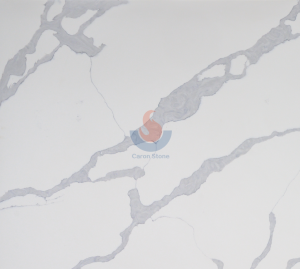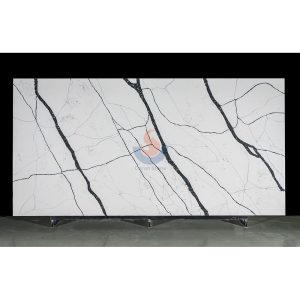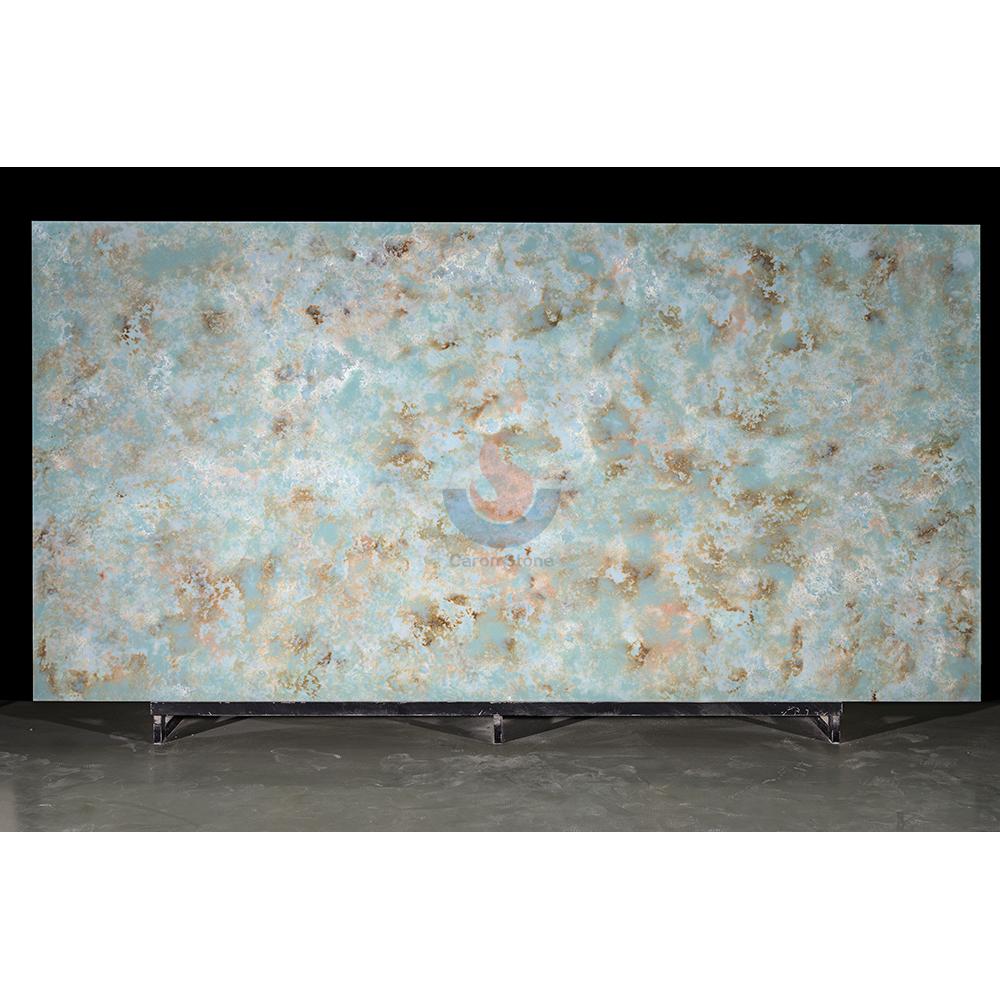We all know that the kitchen is a place with a small space, heavy smoke, and many sundries, so special attention should be paid when decorating. The “6 no-choices” of kitchen quartz countertops are compiled to enable you select the appropriate cabinet operating countertop, so bringing you a more relaxed and comfortable cooking experience.

Calacatta White Artificial Quartz 46
1. Do not choose right-angle edges
In the market, the popular apartment types are usually about 100㎡, and the corresponding kitchen area is between 5㎡-8㎡. Not much area remains for activities once the cabinets have been installed. Thus, we will surely run across bumps while cooking in the kitchen. Choosing right-angle counters is advised against if you want to avoid bodily injury since the corners are quite sharp. Selecting curved or rounded counters helps lower the possibility of bumps.
Especially for families with children, the right-angled edges of the kitchen countertops are very dangerous for children and can easily cause head bumps. Thus, in order to lower the risk factor and guarantee the safety of children in the kitchen, the corners of the operational counters must be polished into rounded corners while customizing cabinets.
2. Do not choose coarse-grained countertops
Broken glass and quartz sand form natural quartz countertops. They are dirt-resistant, heat-resistant, wear-resistant, anti-slip, They can be used in large areas to achieve seamless splicing. Usually split into three types: coarse-grained, fine-grained, and particle-free, quartz stone offers a great range of designs. The surface particles of the cabinet not only influence its appearance but also have direct bearing on the countertop’s strength. Generally speaking, fine-grained quartz counters are superior quality and more strong.
Selecting quartz countertops is advised to start with fine-grained or particle-free models. These two kinds of counters are less prone to staining and yellowing, with less internal pores and better polishing technology. Long-term use helps them to keep a decent shine. Although coarse-grained counters are less expensive, their appearance and durability are less than those of fine-grained counters; moreover, there are more contaminants inside them.
3. Do not choose low-density quartz
Although quartz is a synthetic natural stone, its quality varies due to differences in production processes. Don’t be avaricious for cheapness while choosing quartz countertops; low-priced quartz could be of poor quality with numerous contaminants, few crystals, and low hardness. Choosing premium quartz countertops with either fine or no particles will help to guarantee the endurance and quality of the counters.
The density of quartz is an important indicator for screening high-quality quartz. Some tiny manufacturing companies may blend a lot of calcium powder and use inferior quartz raw materials to cut expenses, producing dark quartz countertops and simple color penetration.
Diet is intimately tied to the kitchen worktop, hence using substandard quartz countertops will compromise our health. Generally speaking, inferior quartz will show easy cracking, murky colors, and strong smells. Consider these features while shopping to guarantee you pick premium quartz counters.
4. Do not choose a thickness of less than 1.5cm
The durability of quartz countertops is closely related to their thickness. Though too thick counters will also influence the load-bearing and general height of the cabinet, generally speaking the thickness of the quartz countertop determines the service life. Common quartz countertops have a 0.8cm-2cm thickness. Though their building period is shorter and their cost is less, thinner counters are rather less durable.
It is recommended not to choose quartz countertops with a thickness of less than 1.5cm, because they are prone to cracking, especially when they are hit by heavy objects or overheated objects are placed, which will affect their service life.
Share a technique to evaluate quartz’s quality: scratch the surface of the quartz with a key. If it is high-quality quartz, its great hardness will prevent clear scratches; but, if it is low-quality quartz, not only will white calcium show up surrounding it but also there will be evident scratches after scraping.
5. Do not choose dark countertops
Dark quartz countertops are becoming trendy and sophisticated right now. Though some acquaintances believe black quartz counters are more resistant to grime than bright ones, the truth is the reverse. Dark quartz counters are more likely to be dirty since oil and dust are generally light-colored and contrasts greatly with dark counters. We must often clean the operational counters to keep them neat and orderly.
Compared with light-colored quartz countertops, dark quartz countertops are more difficult to make and more complicated to make, so they are more expensive. Common households do not require adding this additional decoration cost. Furthermore, the repair cost of black quartz countertops is more costly than that of light-colored ones should cracks show during use. Another costly problem is that ordinary repair masters might not be able to fix them; they must thus get in touch with the maker.
6. Do not choose a countertop without a water barrier
At present, simple-style decoration is more popular, and cabinet countertops are also beginning to adopt a design without a water barrier. Although this design is straightforward and advanced from the looks, construction demands are somewhat significant. Should the size be poorly calculated or the installation master lack expertise, a significant gap will develop and gluing alone can only help to close it.
The main function of the water barrier is to prevent kitchen water from splashing into the gaps in the wall, thereby preventing the wall from getting damp and moldy. To guarantee the dryness and hygiene of the kitchen environment, you should consider the design and construction quality of the water barrier of any cabinet countertop.

Calacatta Quartz 20mm
The R-type water retaining strip is an integrated worktop design that uses a curved transition, which can effectively prevent kitchen water from splashing into the gaps in the wall and prevent the wall from getting damp and moldy. The R-type water retaining strip is more beautiful, has less gaps, has a greater quality effect, and is simpler to maintain daily hygiene-wise than standard water retaining strips.





